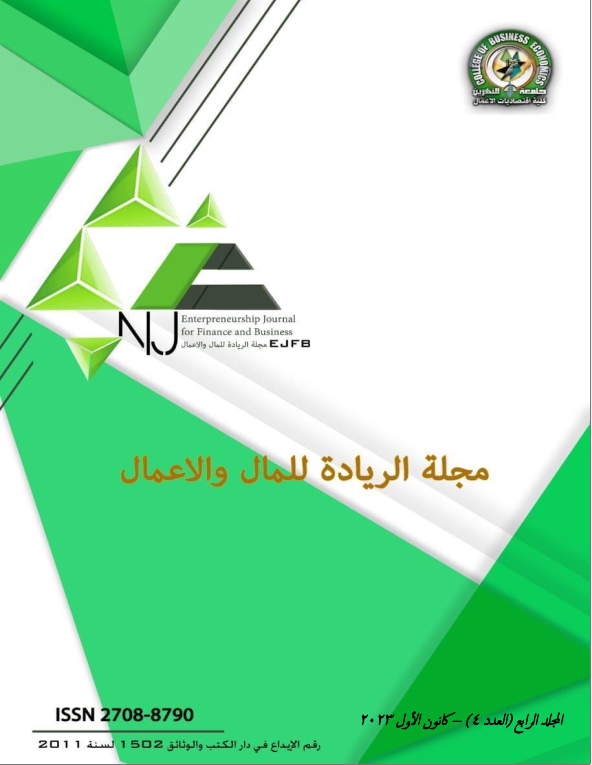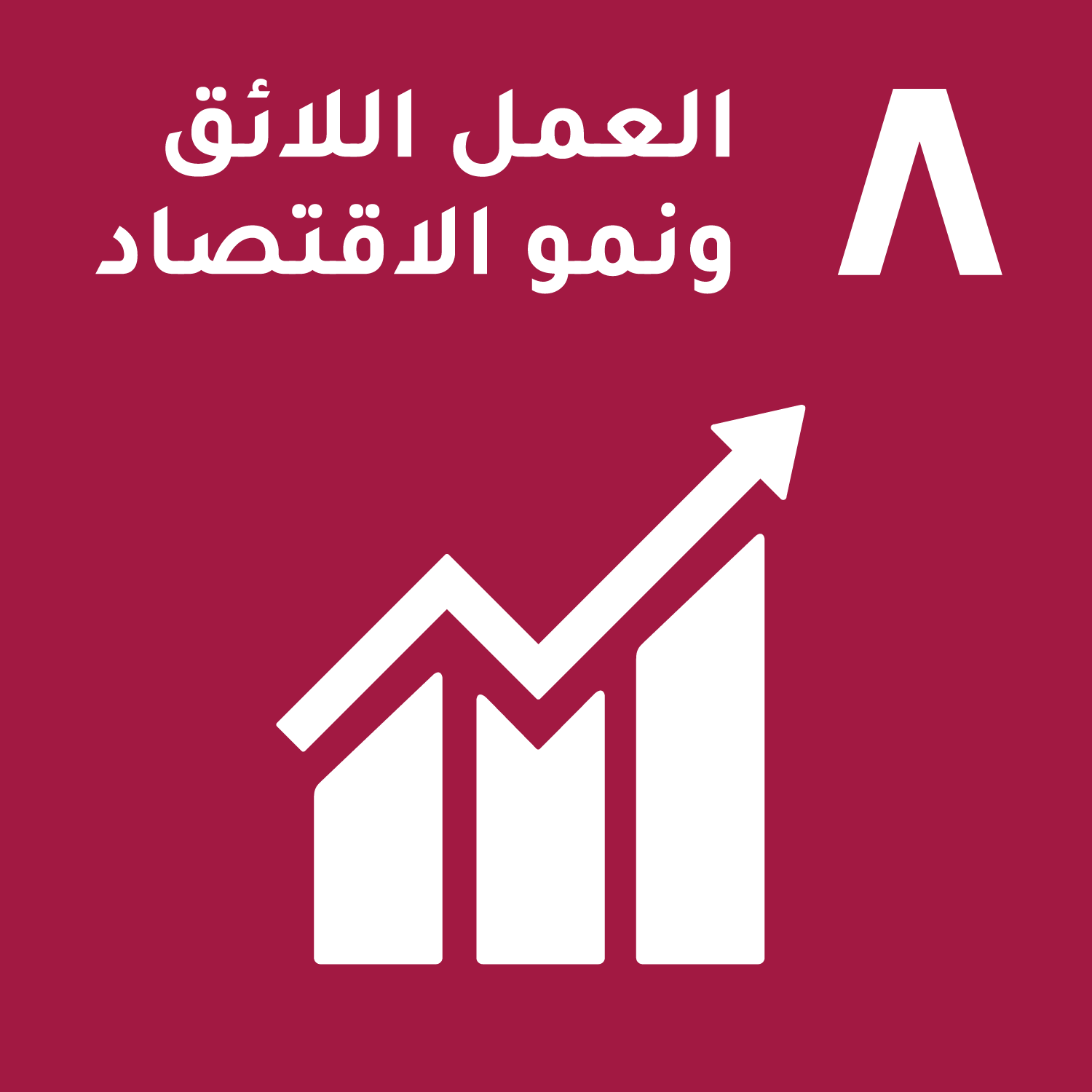أثر المخاطر المصرفية الكلية على بعض مؤشرات الاستقرار الاقتصادي في العراق باستخدام اختبار الحدود للمدة 2004-2021
DOI:
https://doi.org/10.56967/ejfb2023338الكلمات المفتاحية:
المخاطر المصرفية الكلية، نسبة القروض المتعثرة الى إجمالي القروض ، مؤشرات الاستقرار الاقتصادي، رأس المال المصرفي، الاحتياطي الاجنبي، اختبار الحدودالملخص
هدف البحث الى قياس اثر المخاطر المصرفية الكلية وبيان مدى تأثيرها على الاستقرار الاقتصادي للمدة 2004-2021 ومن خلال توظيف اختبار الحدود bound test ، اذ تم تحديد متغيرين لتمثيل المخاطر المصرفية وهما (نسبة القروض المتعثرة الى إجمالي القروض، نسبة القروض المتعثرة الى إجمالي رأس المال)، وكذلك تم تحديد مجموعة من مؤشرات الاستقرار الاقتصادي الكلي وهي :(رأس المال المصرفي ،التضخم ، نسبة صافي الميزان التجاري ، نسبة صافي الموازنة ، الاحتياطي الاجنبي ، الانتشار المصرفي ، المستوى المعيشي ) . ومن أهم الاستنتاجات التي توصل اليها البحث هي وجود وجود علاقة طردية بين زيادة المخاطر المصرفية وزيادة رأس المال المصرفي بتخصيص جزء كبير منه لمواجهة القروض المتعثرة، وهناك تأثير سلبي للمخاطر المصرفية على التضخم من خلال زيادة معدلات التضخم، هناك تأثير سلبي للقروض المتعثرة إلى إجمالي القروض والانتشار المصرفي، إذ أن إرتفاع نسبة التعثر للقروض يؤدي الى تراجع في معدل الانتشار المصرفي، وهناك تأثير سلبي للقروض المتعثرة إلى إجمالي القروض على المستوى المعيشي، إذ أن إرتفاع نسبة التعثر للقروض يؤدي الى تراجع في معدل المستوى المعيشي نتيجة عدم منح القروض للسكان، وأوصى البحث أن تأخذ بنظر دراسة حالة المقترضين قبل منح الائتمان وذلك لتخفيض نسبة التعثر في القروض من خلال تقديم بعض الضمانات الى المصرفي، ضرورة استخدام مؤشر نسبة القروض المتعثرة الى إجمالي رأس المال كواحد من المخاطر المصرفية ذات التأثير على السلامة المالية للمصرف، من خلال ما يمثله مجموع القروض المتعثرة الى ما يمتلكه المصرف من رأس مال وبذلك يعطي رؤية واضحة لما يمتلكه المصرف من رأس مال.
التنزيلات

التنزيلات
منشور
كيفية الاقتباس
إصدار
القسم
الرخصة
الحقوق الفكرية (c) 2023 جواد شاكر فريح، احمد حسين بتال

هذا العمل مرخص بموجب Creative Commons Attribution 4.0 International License.
هذه هي مقالة منشورة بنمط الوصول الحر وموزعة تحت شروط ترخيص المشاع الابداعي نسب المصنف (CC BY) 4.0 دولي التي تسمح بالاستخدام غير المقيد، التوزيع، واعادة الانتاج في أي وسيط أو صيغة، والتحوير أو البناء على المادة، بما في ذلك للأغراض التجارية، شريطة أن يتم نسب العمل للمؤلف الأصلي.





